Fixing more than leaks
As the UK's largest wholesale water and wastewater services provider Thames Water is committed to minimise leaks and offering a responsive customer service.
We set out to understand the existing user experience by identifying pitfalls and design a solution to reporting a problem.
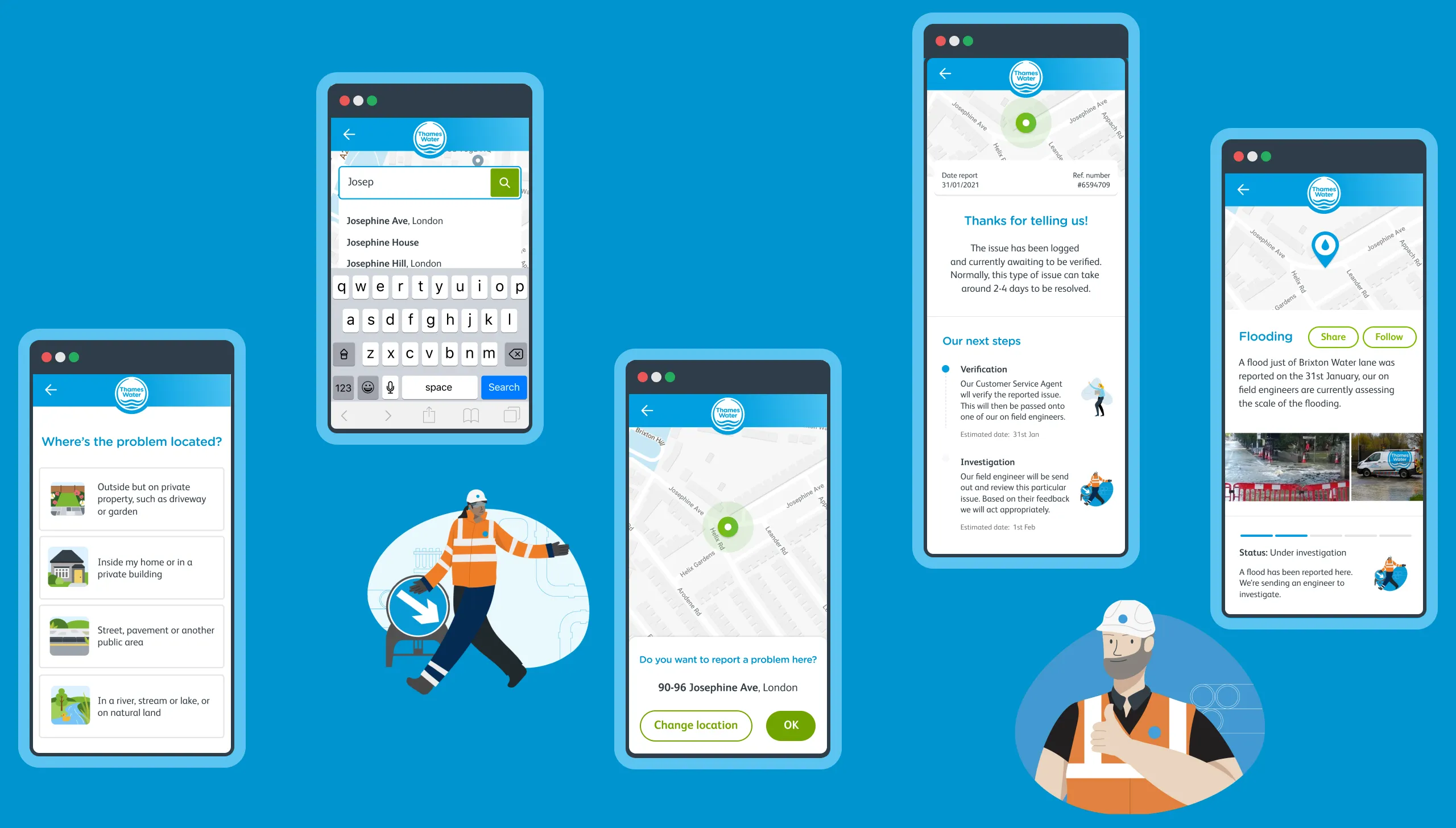
Want to see the work files? Feel free to get in touch.
Digging beneath the surface
We conducted interviews with customers, employees and technicians and gained data from user reviews.
Interviews where divided by the team. I was part of interviewing employees (Costumer service) through a workshop to capture their needs and inform us on the customer journey map. User reviews were already captured by the client.
Key pain points
❌ Unclear where to report a problem
Users often struggled to locate where they could report a problem. The process wasn't immediately obvious, which caused confusion and delayed reporting.
❌ Hard to pinpoint the location
Even when users managed to report a problem, they found it difficult to provide Thames Water with the exact location. This in turn led to vague or incomplete reports.
❌ Low engagement after reporting
Because users didn't see much follow-up or feedback once they submitted a report, their engagement dropped.
❌ Repeating information
Users grew frustrated at having to re-enter the same details multiple times, which sometimes led to bouncing off the process entirely.
❌ Duplicate reports
Users couldn't see other complaints in the area, leading to duplicate entries.
Running a sprint
We ran a week long design sprint using the Google Design Sprint method, focussing on improving the customer experience for reporting a problem. With our research and empathy maps as a foundation, we structured the sprint to workshop and ideate potential solutions collaboratively.

The sprint was facilitated by our product manager, but my main responsibility was as leading idea generation, encouraging creativity among non-designers and building the prototype.
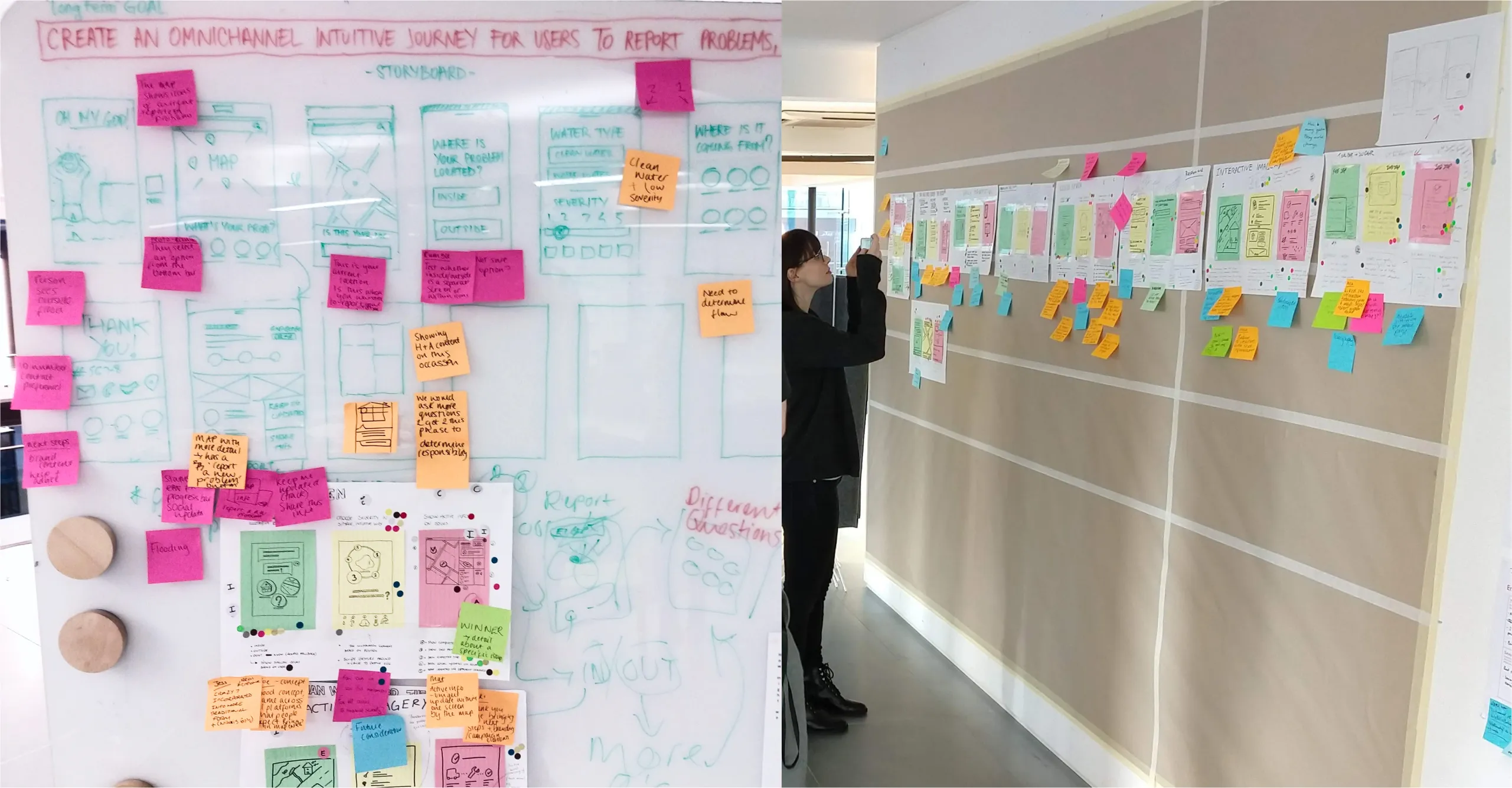
It's an intense, fast-paced week. Energizing, but also a little draining at times. The pace can feel rushed, so I reminded myself that the goal is validation and insights, not a finished product. I've also learned that even discarded ideas often resurface later to inspire stronger solutions. Taking the lead on ideation and building the prototype adds extra pressure, but it also pulls me fully into the process which was rewarding.
Delving deeper into a solution
As a UX/UI/Dev triple tandem we created user flow diagrams, high fidelity designs and a coded prototype. I also decided on the visual design direction whist defining the design system.
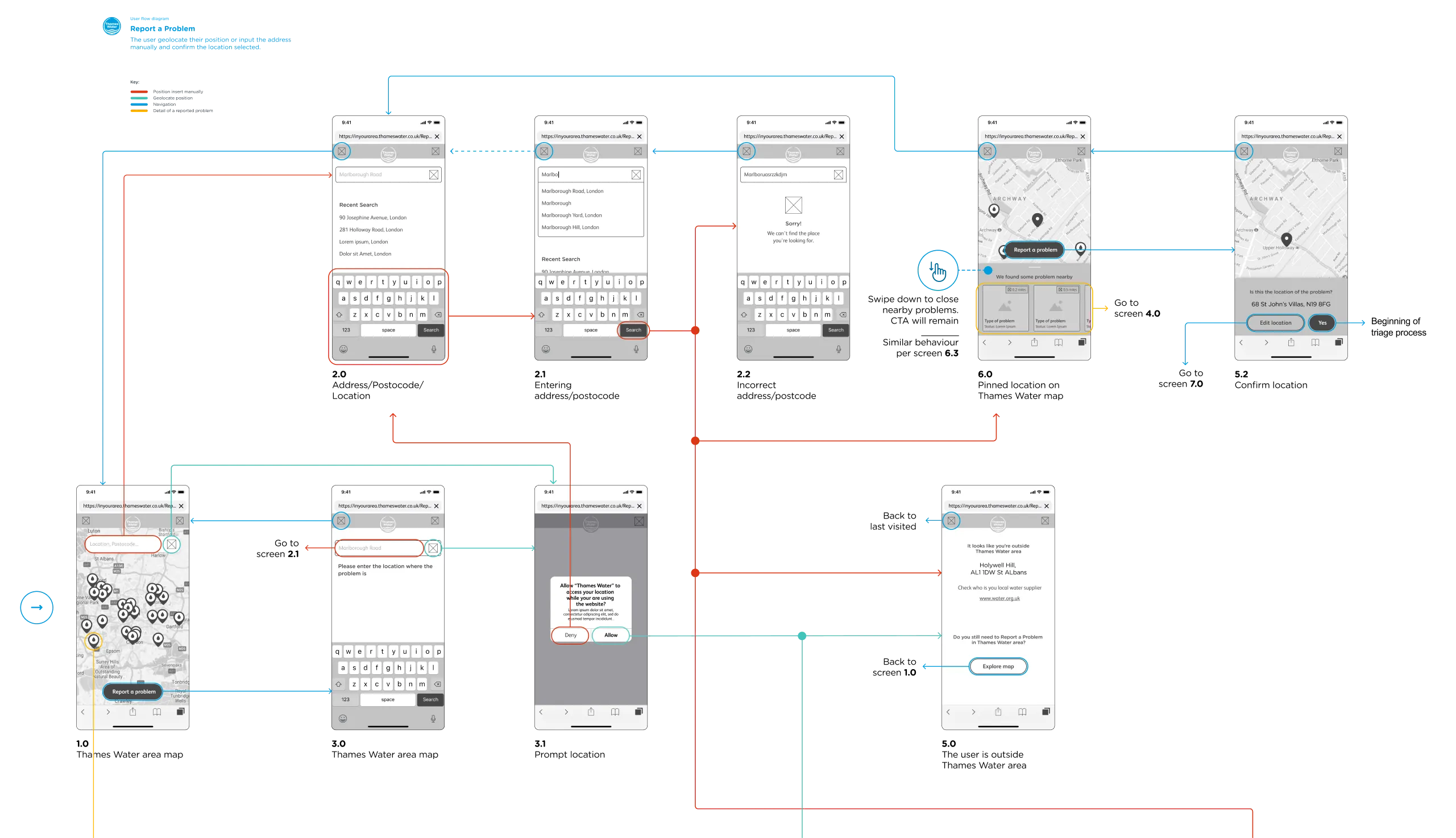
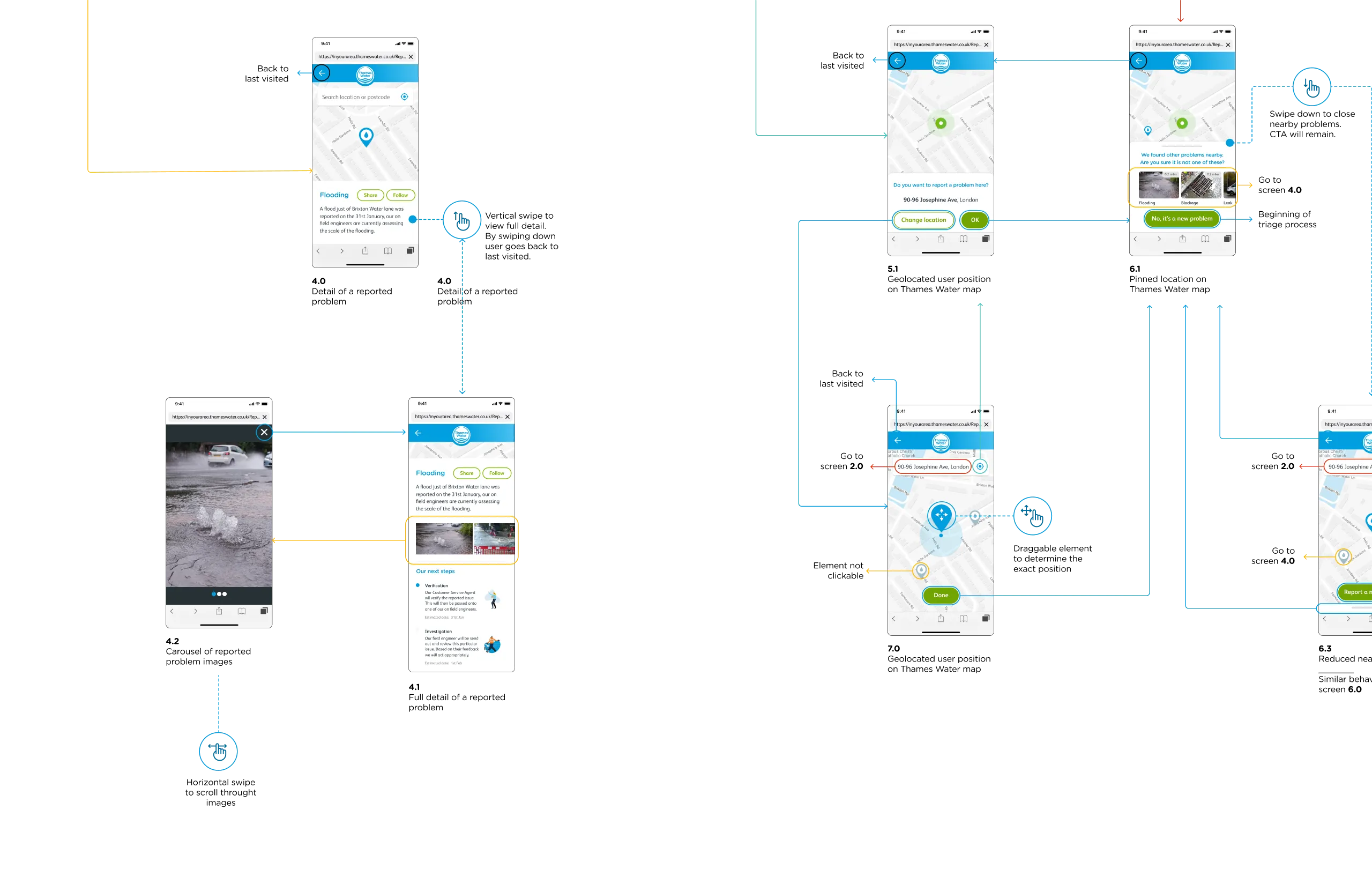
Cross-over teams
My team was made up of T-shaped individuals, which gave me the chance to step into a range of responsibilities. The work was end-to-end, requiring both strategic thinking and precise execution. I moved between facilitating workshops, co-creating user flows, design & prototyping and even coding animations and interactions.
Design system
While we were running customer experience design sprints, Thames Water was also in the midst of a brand identity shift. To align with the improved web experiences, I was responsible for building a new design system that could be applied consistently and practically across all digital channels.
I've learned most about scalability and maintainability of design systems from being a Front-end designer creating coded pattern libraries for large companies like Atlas Copco.
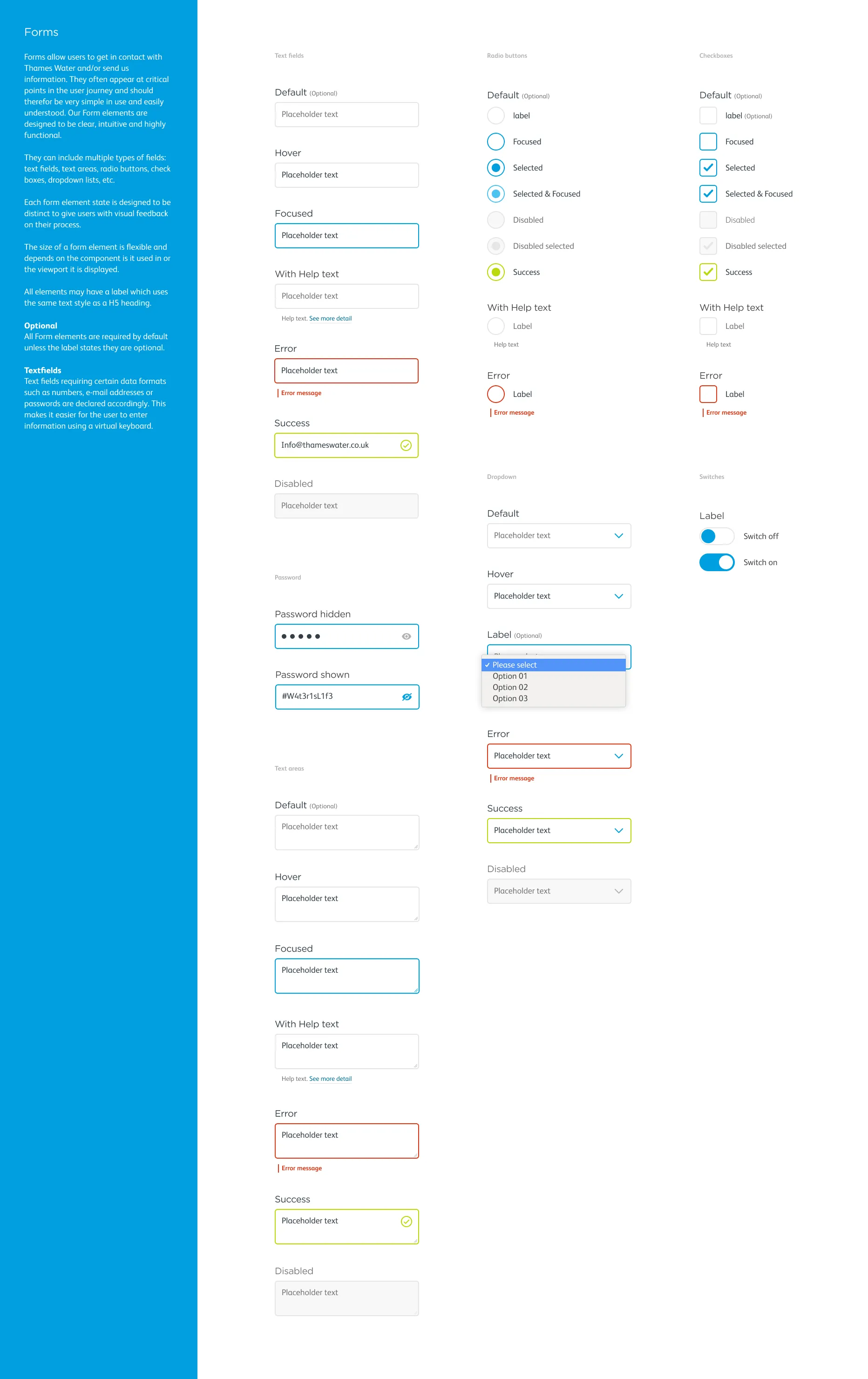
Success metrics
The end product was handed over to Thames Water's in-house team for integration into their ecosystem. From that point, the responsibility for measuring success was theirs, with NPS defined as the primary metric.
Final thoughts
This was an exciting project to be part of. Sometimes overwhelming as their were many stakeholders on the clients side. It made me realise how important it is to include the correct people, not only users of your product. If employees feel heard, you get buy-in in future stages making it way easier to collaborate and come to a solution. Equally having a small, streamlined team to execute, where everybody is open to critique and comfortable to fail, that is where true productivity (and fun ✨) lies.